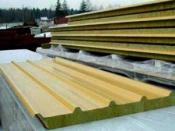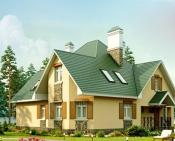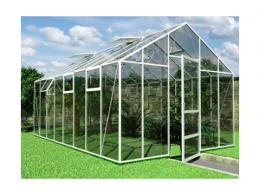Search
Login
We build a greenhouse on a personal plot, types of greenhouses, a do-it-yourself greenhouse
The eternal care of any gardener is the preservation and growth of crops grown on their own plot. Unfortunately, the climate in our country is far from always allowing a generous harvest on open soil and owners of home plantations erect various designs that are designed to preserve delicate plants from the fatal effects of low temperatures and unexpected rainfall. Such constructions are ordinary greenhouses that protect delicate seedlings from cold and morning dew.
Content
- Types of Greenhouses
- Polycarbonate greenhouse video
- About wooden greenhouses video
- DIY construction greenhouse features
- Greenhouse heating
- Gas heating greenhouses video
Types of Greenhouses
An ordinary greenhouse, this is essentially an insulated room with a transparent roof and walls, in which planted plants live as comfortably as possible. There are many varieties of greenhouses that differ in their design features, price, period of operation and the materials from which it is built.

Polycarbonate greenhouses are one of the most common and popular. There are several reasons for this:
Cellular polycarbonate, which sewn up the walls and ceiling of the greenhouse, transmits up to 90% of sunlight, which is undoubtedly very important for sun-loving plants.
Protection of plantings from ultraviolet radiation occurs due to a special coating that filters and scatters sunlight. Therefore, the danger of burning tender sprouts simply does not exist.
High strength characteristics of polycarbonate, which is able to withstand shock and not crack from rough handling.
Easy processing with self-assembly of the greenhouse. Polycarbonate is freely cut and sawn with ordinary scissors for metal or a saw.
Good thermal insulation performance. Polycarbonate amazingly keeps warmth and plants planted in such a greenhouse, even freezing temperatures are not terrible.
These are undoubtedly the lightest, strongest and best greenhouses of all possible. The only thing gardeners should know about is that you should not be tempted by cheap designs. In ready-made budget options, an inexpensive metal profile is used, which is simply not able to withstand winter precipitation (snow), which in turn leads to its deformation. More expensive and high-quality prefabricated structures include the installation of a frame from a pipe, the cross-section of which can withstand much more serious loads. Cheap cellular polycarbonate also does not contribute to the normal growth of plants, since it does not meet the declared characteristics. Low cost is achieved by applying a thinner protective film, or even its absence. The service life of polycarbonate is 10-12 years. After this, the coating must be removed and another laid. Thus, we can conclude the polycarbonate greenhouse is a wonderful thing, but not cheap.
Greenhouses made of wood and glass or film, until recently, were the only affordable option for gardeners. Although many owners of their own sites use this simple design to this day. To create it, inexpensive lumber is required (sometimes even old window frames are used) glass or film.

They begin construction with the arrangement of the foundation, which is simply necessary for wooden structures. This will help prevent premature rotting of the lumber and serve to better maintain heat.
Next, a frame is made for which wooden blocks are used with a cross section of at least 100 * 100. They will become the pillar of the whole structure as a whole, so they need to be positioned vertically at a distance of no more than 1.5 m from each other. A crate is pumped onto them, into which glass will be inserted or a film for greenhouses will be stretched.
The roof in wooden structures, in no case should not be flat, otherwise the glass or film will quickly become worthless from the pressure arising in the process of precipitation. Therefore, single-pitched or gable roofs are constructed, from which any precipitation descends easily and without causing harm.
DIY construction of a greenhouse
Do-it-yourself installation and construction of the greenhouse always starts with plans and drawings that are designed to make the future structure strong and durable. Material is selected for the carcass profile, metal pipes or wood.
The ultimate weight that the wooden or metal parts of the structure can support is calculated and the distance between the vertical carriers is determined. The type of material from which the walls and ceiling will be made (polycarbonate / glass / film) is selected and, based on these data, it is possible to calculate the load on the frame as a whole.

Making drawings of greenhouses is not difficult at all, for this you need paper, pen, ruler, calculator and a bit of common sense, which will help not to make mistakes when making calculations.
Greenhouse heating
To grow various vegetables at sub-zero temperatures, you can arrange heating the greenhouse.
A great variety of options and methods are offered. We will try to deal with several of them.
1. Elementary. It is necessary to take a pipe with a diameter of at least 50 cm and a length of 2-3 m. Leave one end of the pipe in the greenhouse itself (not in the ground!), And leave the other outside. Under the outer end, make a fire and constantly maintain it. Heated air will pass through the pipe and heat the greenhouse. This method is used in late autumn, when it remains literally a few days before harvesting, and frosts are already making themselves felt. It is not intended for constant heating.
2. Water heating, used to supply heat in winter. Pipes are mounted and the boiler is installed. To make such heating is very difficult, but if it was already possible to install it, then it will last for many years, heating the premises of the greenhouse even in severe frosts.

3. Infrared heaters installed in the greenhouse are also able to save plants from hypothermia.

4. Air heating, very similar to option No. 1, only an electric boiler or stove acts as a heat source. This heating option is very effective, but has one significant drawback, the humidity in the greenhouse drops significantly, and the plants dry out and turn yellow.

It is best to use combined heating options when heating the greenhouse. This will allow you to not worry about the safety of greenery during a power outage and simply flood the stove, which will heat the air through the pipes. These options are suitable for all types of greenhouses, including pipe and cellular polycarbonate greenhouses, which also need heating at sub-zero temperatures.





